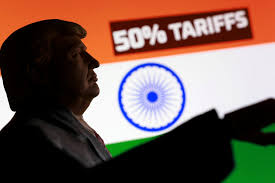Introduction
Tariffs play a crucial role in international trade, as they can significantly influence economic relationships between countries. These taxes imposed on imported goods are often used by governments to protect domestic industries and generate revenue. In the current global economic climate, characterized by heightened trade tensions and the aftermath of the COVID-19 pandemic, understanding the implications of tariffs is more important than ever.
Current Trends in Tariffs
In recent years, many countries have adopted increasingly protectionist measures, leading to the proliferation of tariffs. For instance, the United States and China have engaged in a tariff war that has impacted various sectors, including technology and agriculture. In 2021, the U.S. maintained tariffs on $350 billion of Chinese goods, while China retaliated with its own tariffs on American products. This ongoing tension has resulted in price increases for consumers and disrupted global supply chains.
Additionally, many countries have been revisiting their trade agreements in light of tariff impacts. The African Continental Free Trade Area (AfCFTA), which came into effect in January 2021, aims to reduce tariffs on intra-African trade. This significant agreement seeks to bolster economic ties between African nations and is expected to provide a substantial boost to the continent’s economic growth.
Consequences of Tariffs
Tariffs can have a variety of effects on economies. While they may temporarily protect domestic industries from foreign competition, they can also lead to inefficiencies and higher prices for consumers. For example, tariffs on steel and aluminum imposed by the U.S. have led to higher construction costs and delays in infrastructure projects. Furthermore, businesses often adjust their supply chains in response to tariffs, which can lead to unintended consequences for employment and economic stability.
Looking Forward: Tariff Forecasts
As we look to the future, the international trade landscape is likely to continue evolving. Analysts predict that some countries may seek to de-escalate tariff disputes in favor of more collaborative trade practices, especially as global economies recover from the pandemic. However, the potential for new tariff implementations remains, particularly in response to geopolitical tensions and economic shifts.
Conclusion
In summary, tariffs are a vital element of the global trading system, with far-reaching implications for economies and consumers alike. As trade dynamics shift, understanding the role of tariffs will be essential for businesses and policymakers. Keeping abreast of these changes can help stakeholders make informed decisions that align with both domestic interests and global market realities.


